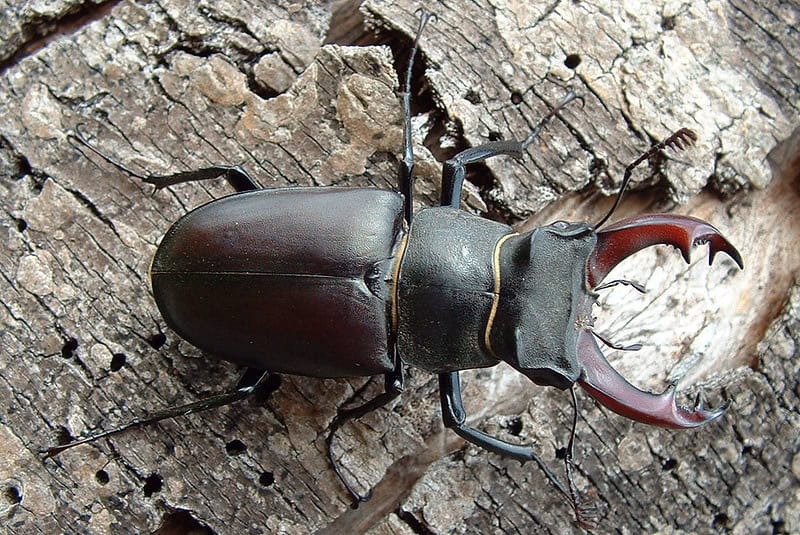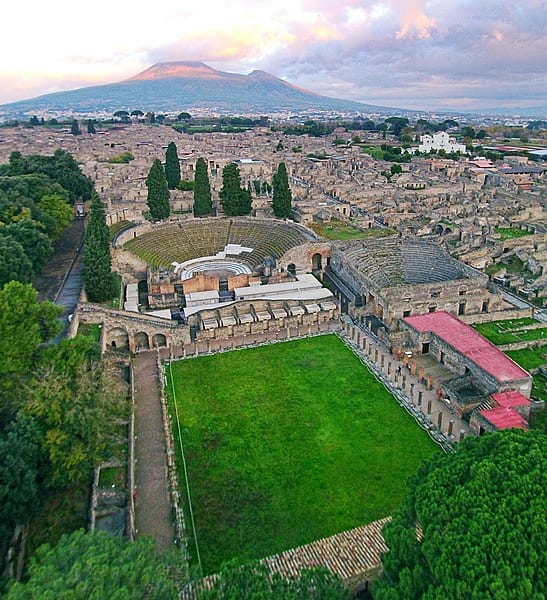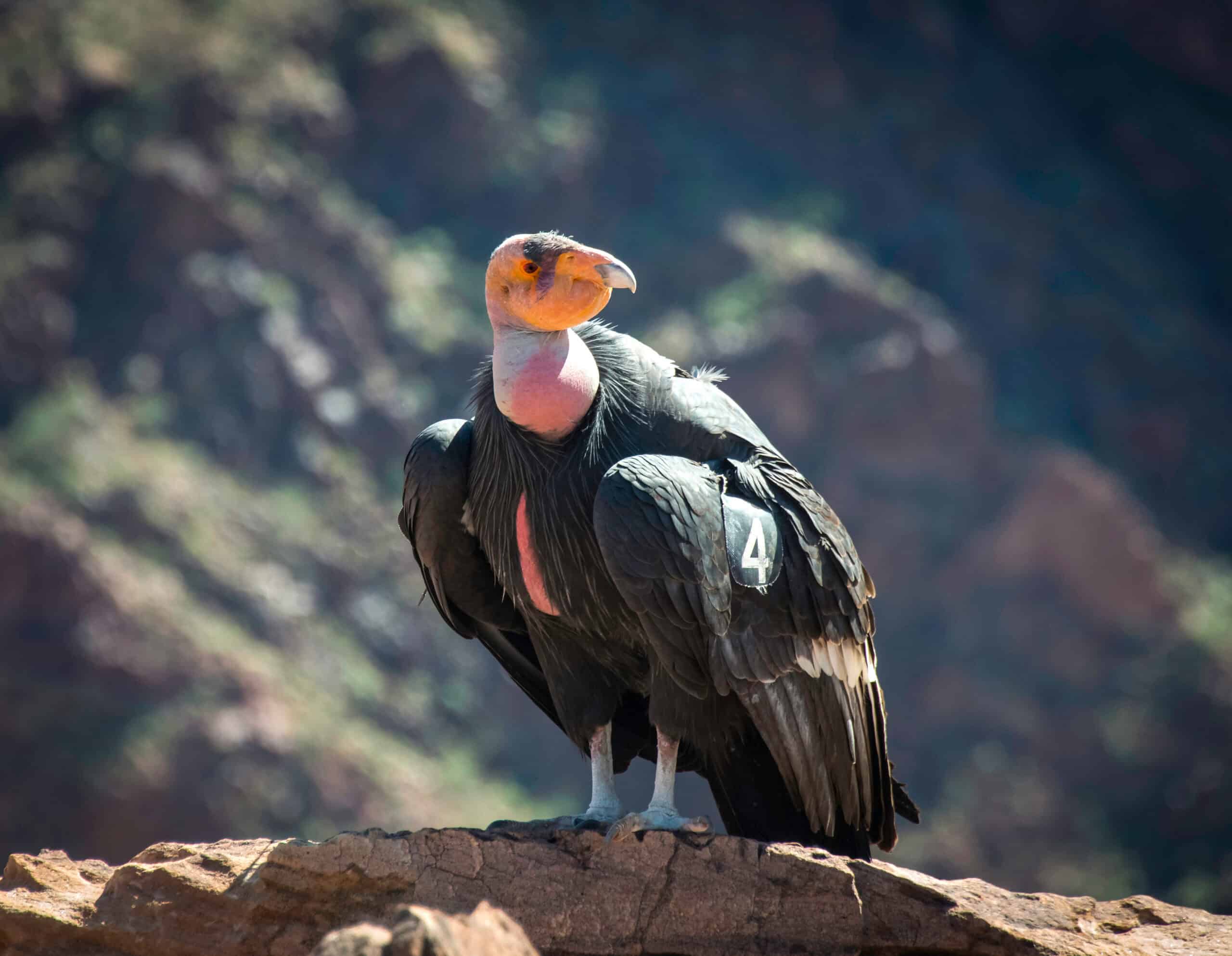If you love having a garden that’s always in bloom, no matter the season, you’re in for a treat. Many plants offer year-round color and beauty, ensuring that your outdoor spaces or indoor corners remain vibrant and lively every month of the year. In this article, we’ll explore the top 16 striking flowering plants that bloom year-round, bringing constant bursts of color to your garden. These plants are not only visually stunning but also resilient, making them perfect for gardeners looking to enjoy endless blooms with minimal fuss.
Rose
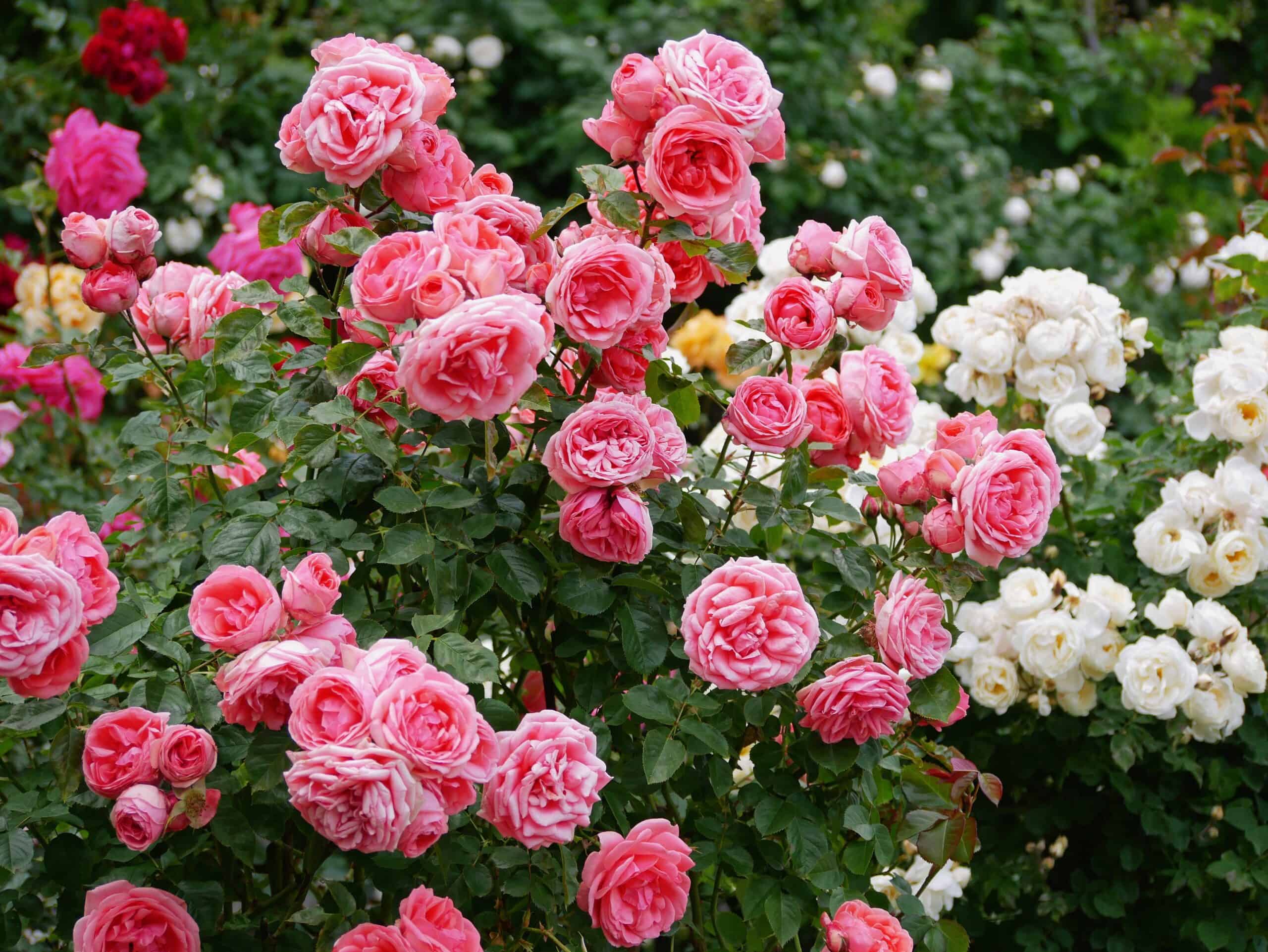
Roses are often considered the ultimate symbol of beauty and love, making them one of the most iconic and cherished flowering plants worldwide. With over 300 species and thousands of cultivars, roses offer an incredible variety of colors, forms, and fragrances, ensuring there’s a rose for every garden or bouquet. Their blooms can range from the classic velvety red of hybrid teas to the delicate blush of climbers, and the vibrant yellows, pinks, and oranges of modern shrub roses. Roses are incredibly versatile, thriving in garden beds, containers, and even trained as climbers on trellises and arbors. Their year-round blooming capability in milder climates makes them a constant source of color and elegance in gardens. Roses require regular care, including pruning, feeding, and protection from pests, but the reward is an ever-blooming display that can last throughout the year. Their fragrance varies from intense and spicy to light and sweet, adding an extra sensory dimension to their visual appeal. Whether in formal rose gardens or as a feature in mixed borders, roses remain a timeless favorite that embodies the essence of perennial beauty.
Bougainvillea
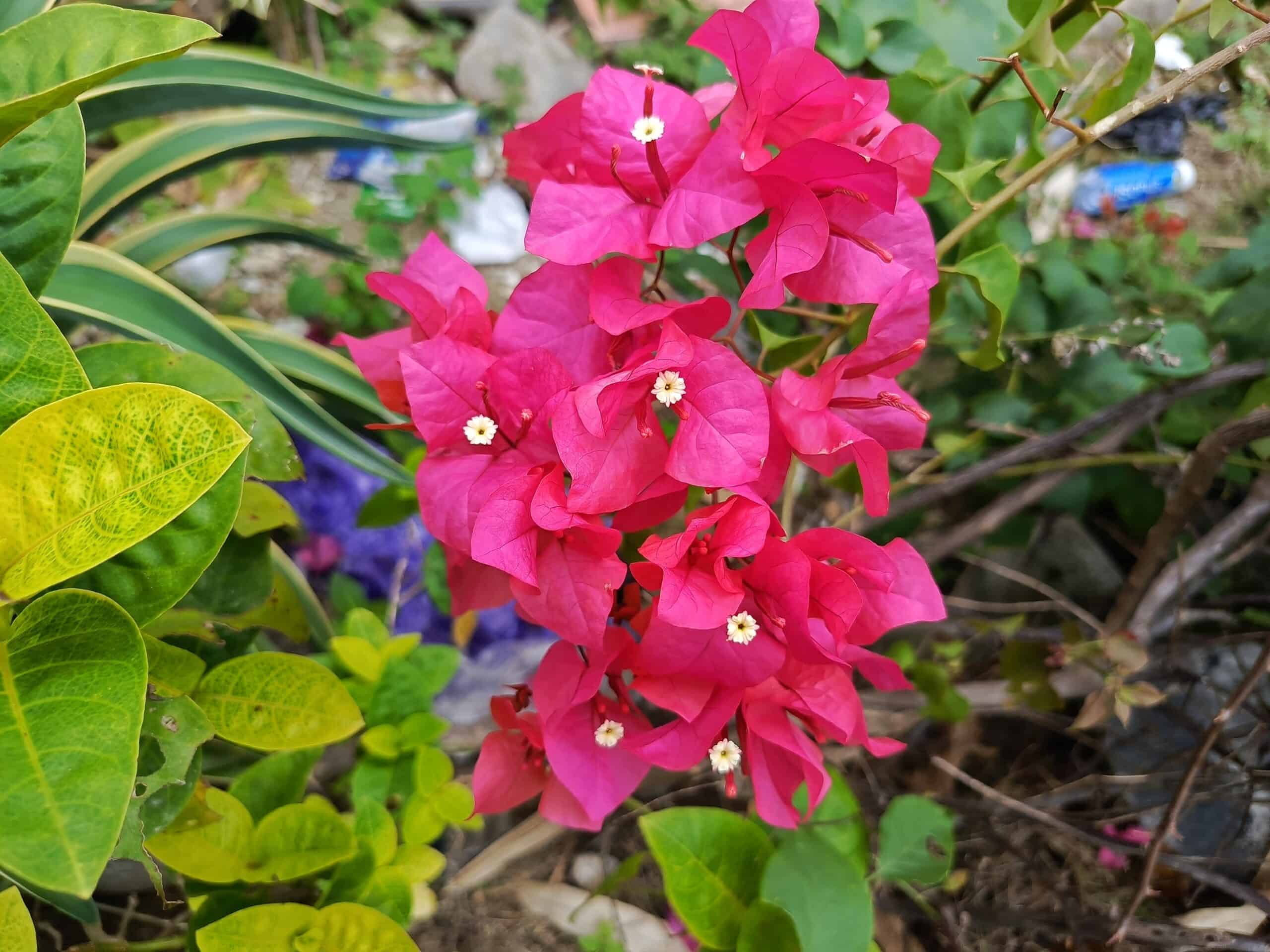
Bougainvillea is a stunning, hardy plant renowned for its vibrant bracts that mimic the appearance of petals. These colorful bracts, which come in a spectrum of colors including magenta, purple, red, orange, pink, and white, surround small, inconspicuous flowers and create a dazzling display of color. Bougainvillea is native to South America but has become a popular ornamental plant worldwide, especially in warm, tropical, and subtropical climates where it can bloom year-round. It’s an incredibly versatile plant that can be grown as a vine, climbing up trellises, walls, and fences, or pruned into a bushy shrub for use in borders and container gardens. Bougainvillea is highly resistant to drought and can thrive in poor soil conditions, making it a low-maintenance choice for gardeners. Its rapid growth and ability to cover large areas make it ideal for creating vibrant, colorful backdrops in gardens and landscapes. In addition to its aesthetic appeal, Bougainvillea’s resilience and long blooming period ensure that it remains a vibrant part of the garden throughout the year, providing continuous bursts of color that brighten any space.
Begonia
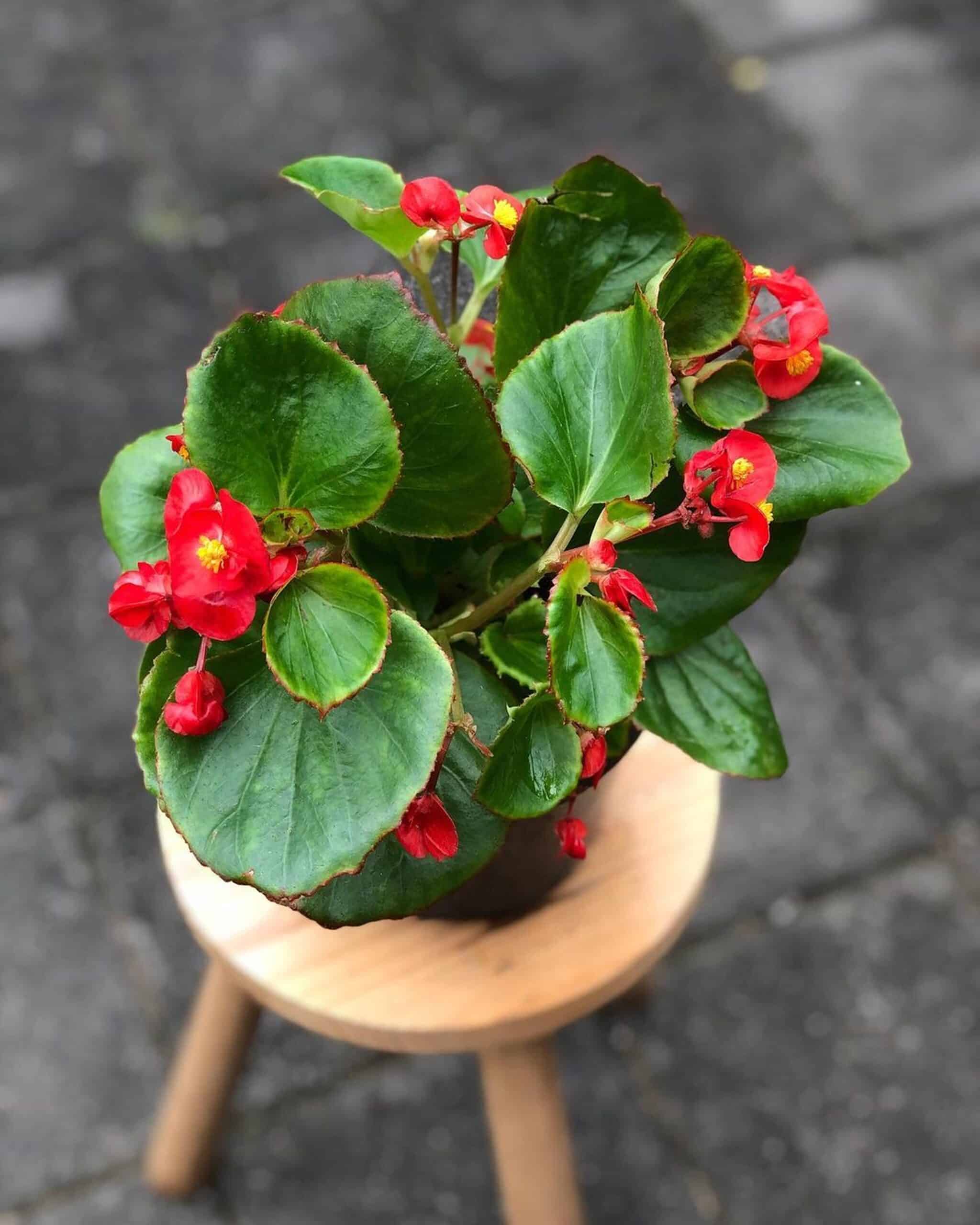
Begonias are beloved for their ability to bring lush, vibrant color to both indoor and outdoor settings, making them a favorite among gardeners and plant enthusiasts. These versatile plants are known for their diverse range of flower shapes, sizes, and colors, with blooms that can be single or double, and come in shades of red, pink, yellow, white, and even bi-colored varieties. Begonias are also prized for their attractive foliage, which can range from glossy green to deep bronze, adding texture and contrast to their striking flowers. One of the key features of begonias is their ability to bloom continuously throughout the year when given the right conditions. They prefer bright, indirect light and thrive in both humid, tropical environments and as houseplants in cooler climates. Begonias are relatively easy to care for, requiring regular watering and well-drained soil to prevent root rot. In addition to their aesthetic appeal, begonias are also valued for their adaptability, thriving in a variety of environments from shaded garden beds to bright, airy indoor spaces. Their year-round blooming capability, combined with their rich colors and lush foliage, make begonias a top choice for adding continuous beauty and interest to any garden or home.
Lantana
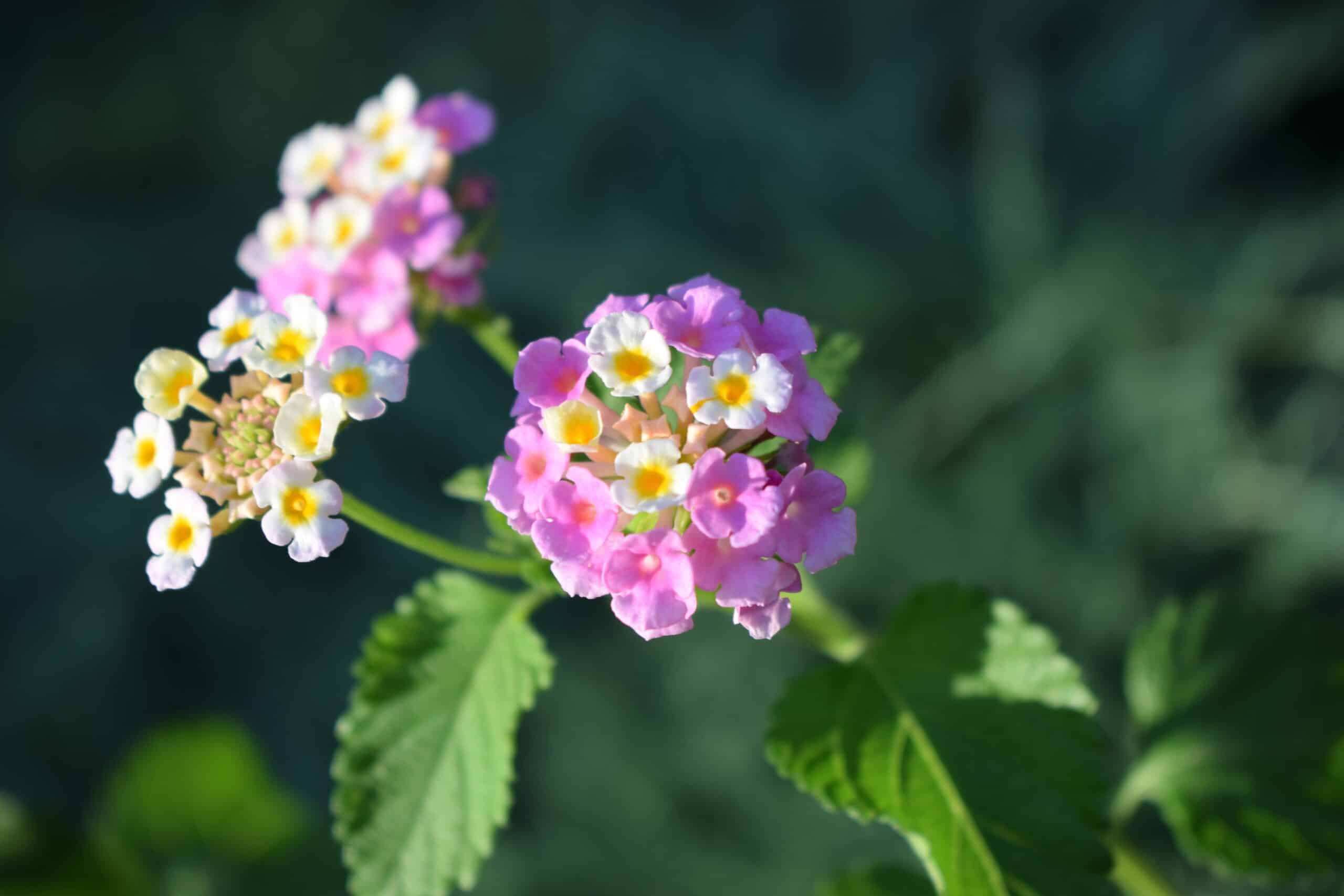
Lantana is a vibrant, hardy plant that is known for its stunning clusters of small, brightly colored flowers that bloom continuously throughout the year in warm climates. The flowers, which can be a mix of yellow, orange, red, pink, purple, and white, are often seen in gardens, landscapes, and hanging baskets, adding a dynamic burst of color wherever they are planted. Lantana is highly valued not only for its visual appeal but also for its ability to thrive in challenging conditions. It is drought-tolerant, making it an excellent choice for xeriscaping or low-water gardens, and it can thrive in poor soil conditions with minimal care. Lantana’s resilience extends to its ability to withstand heat and direct sunlight, making it a reliable choice for gardens in hot, sunny climates. In addition to its striking appearance, Lantana is a magnet for pollinators, particularly butterflies and hummingbirds, which are attracted to its bright, nectar-rich flowers. This adds an extra layer of liveliness to any garden where Lantana is planted. Whether used as ground cover, in borders, or in containers, Lantana’s year-round blooming and vibrant color make it a standout plant that brings continuous beauty and life to gardens and landscapes.
Lavender
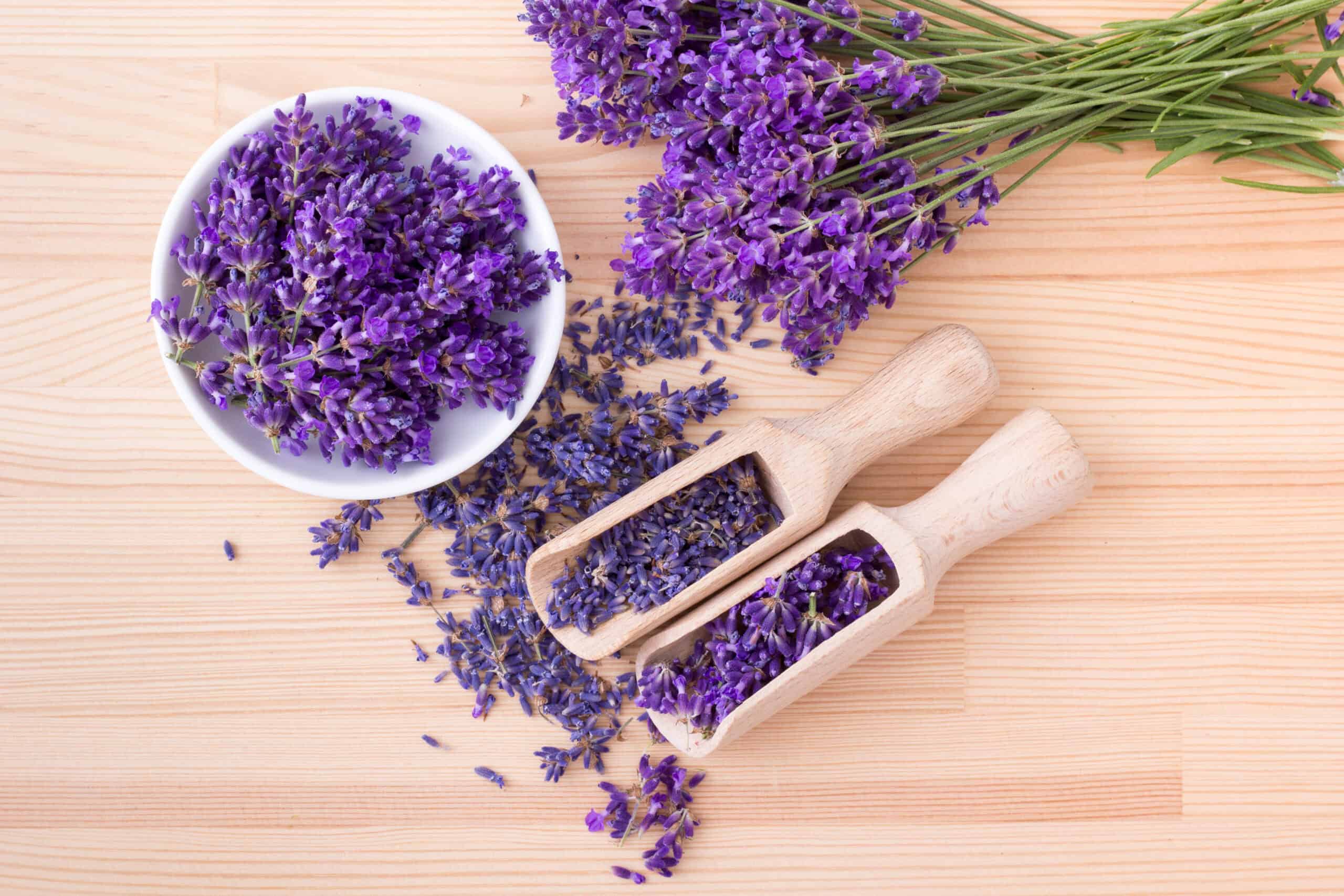
Lavender is a beloved herb and flowering plant known for its fragrant, silvery-green foliage and spikes of purple-blue flowers that bloom year-round in favorable climates. Originating from the Mediterranean region, lavender is highly versatile and can be used in gardens, borders, containers, and even as a fragrant hedge. Its flowers are not only visually appealing but also highly aromatic, releasing a soothing scent that is often used in aromatherapy, sachets, and culinary dishes. Lavender thrives in full sun and well-drained soil, making it well-suited to dry, warm climates and ideal for drought-tolerant landscaping. The plant is also a favorite among pollinators, particularly bees, which are drawn to its nectar-rich flowers. Lavender’s ability to bloom continuously, coupled with its low maintenance requirements, makes it a popular choice for gardeners looking to create a relaxing, fragrant garden space. Its striking purple flowers and calming scent add a touch of elegance and tranquility to any garden, making lavender a must-have plant for those seeking year-round beauty and aromatic delight.
African Violet
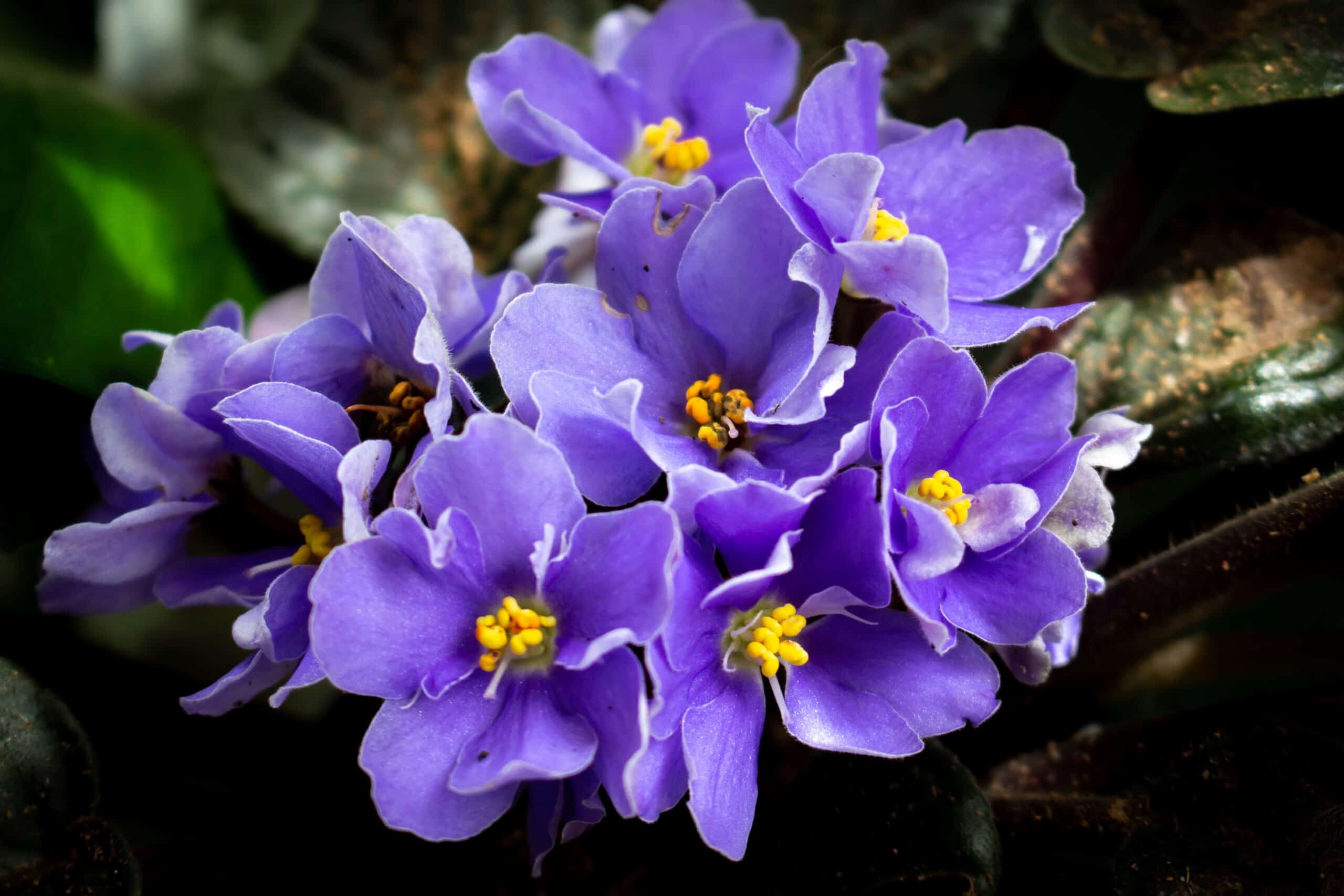
African Violets are among the most popular and enduring houseplants, cherished for their compact size, vibrant flowers, and ability to bloom continuously with minimal care. Native to the tropical regions of East Africa, these plants are perfectly suited to indoor cultivation, where they thrive in bright, indirect light and humid conditions. African Violets produce small, velvety flowers in a wide range of colors, including shades of purple, pink, blue, and white, with some varieties featuring bi-colored or even frilled petals. The flowers are complemented by the plant’s fuzzy, succulent-like leaves, which help it retain moisture and add to its overall charm. One of the most appealing aspects of African Violets is their ability to bloom year-round, providing a constant source of color and beauty in indoor spaces. They are relatively easy to care for, requiring regular watering, high humidity, and occasional fertilization to maintain their vibrant blooms. African Violets are perfect for brightening up windowsills, tabletops, and other small spaces, making them a favorite for indoor gardeners seeking a plant that combines beauty, ease of care, and continuous flowering.
Ixora (Jungle Geranium)
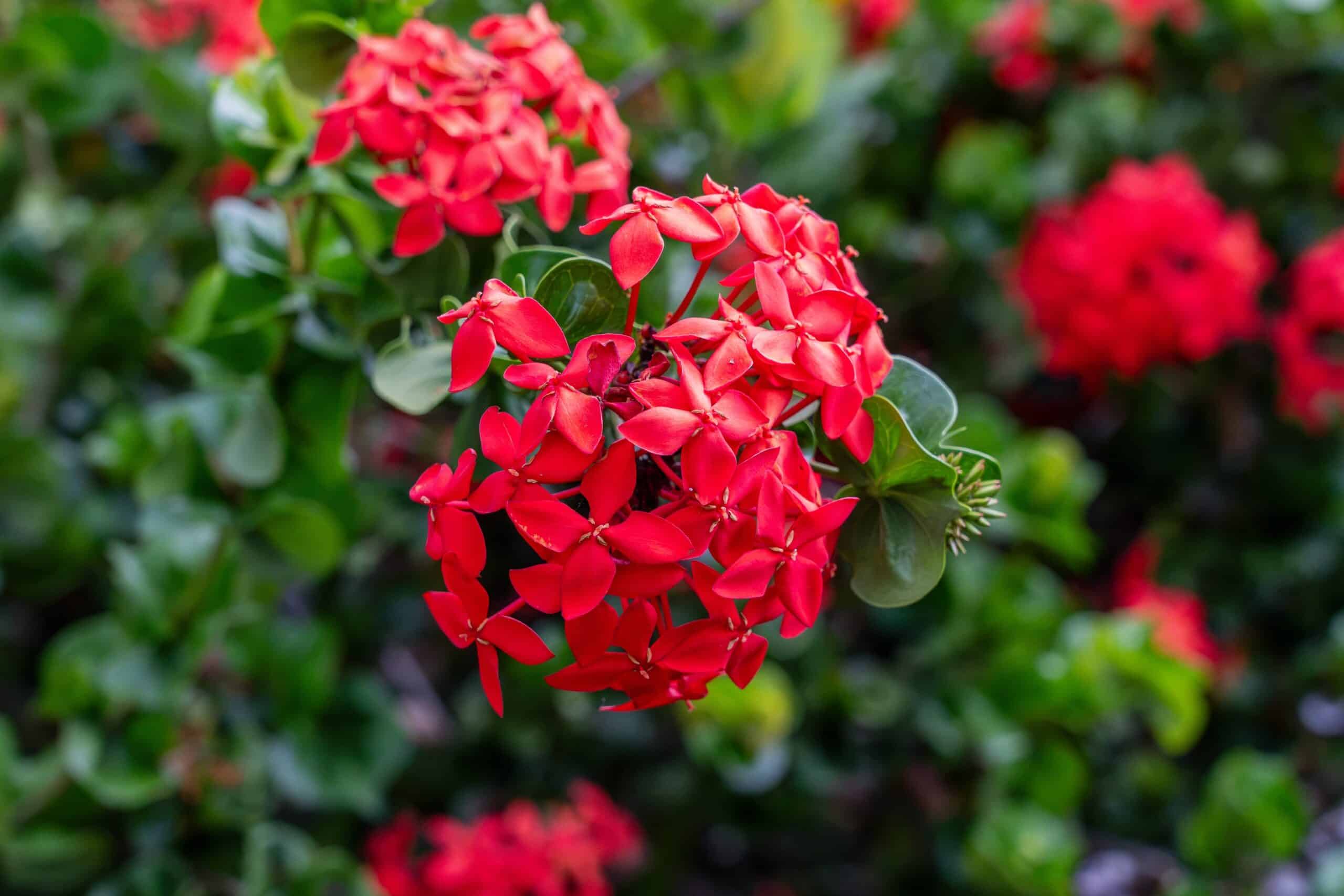
Ixora, commonly known as Jungle Geranium, is a tropical plant that is highly prized for its vibrant, year-round blooms. This plant produces clusters of small, tubular flowers in striking colors such as red, orange, pink, and yellow, creating a bold visual impact in any garden or landscape. Ixora’s glossy, evergreen foliage provides a lush backdrop for its vivid flowers, adding to its overall appeal. Native to tropical regions of Asia and Africa, Ixora thrives in warm, sunny climates and is often used in landscaping as a shrub, hedge, or container plant. The plant is relatively low-maintenance, requiring only regular watering and well-drained soil to flourish. Ixora is also tolerant of a range of soil types, making it adaptable to various garden environments. In addition to its aesthetic value, Ixora is known for its ability to attract pollinators, particularly butterflies, which are drawn to its nectar-rich flowers. The plant’s continuous blooming, combined with its vibrant colors and lush foliage, makes Ixora a standout choice for adding a tropical flair and year-round color to gardens, patios, and other outdoor spaces.
Geranium
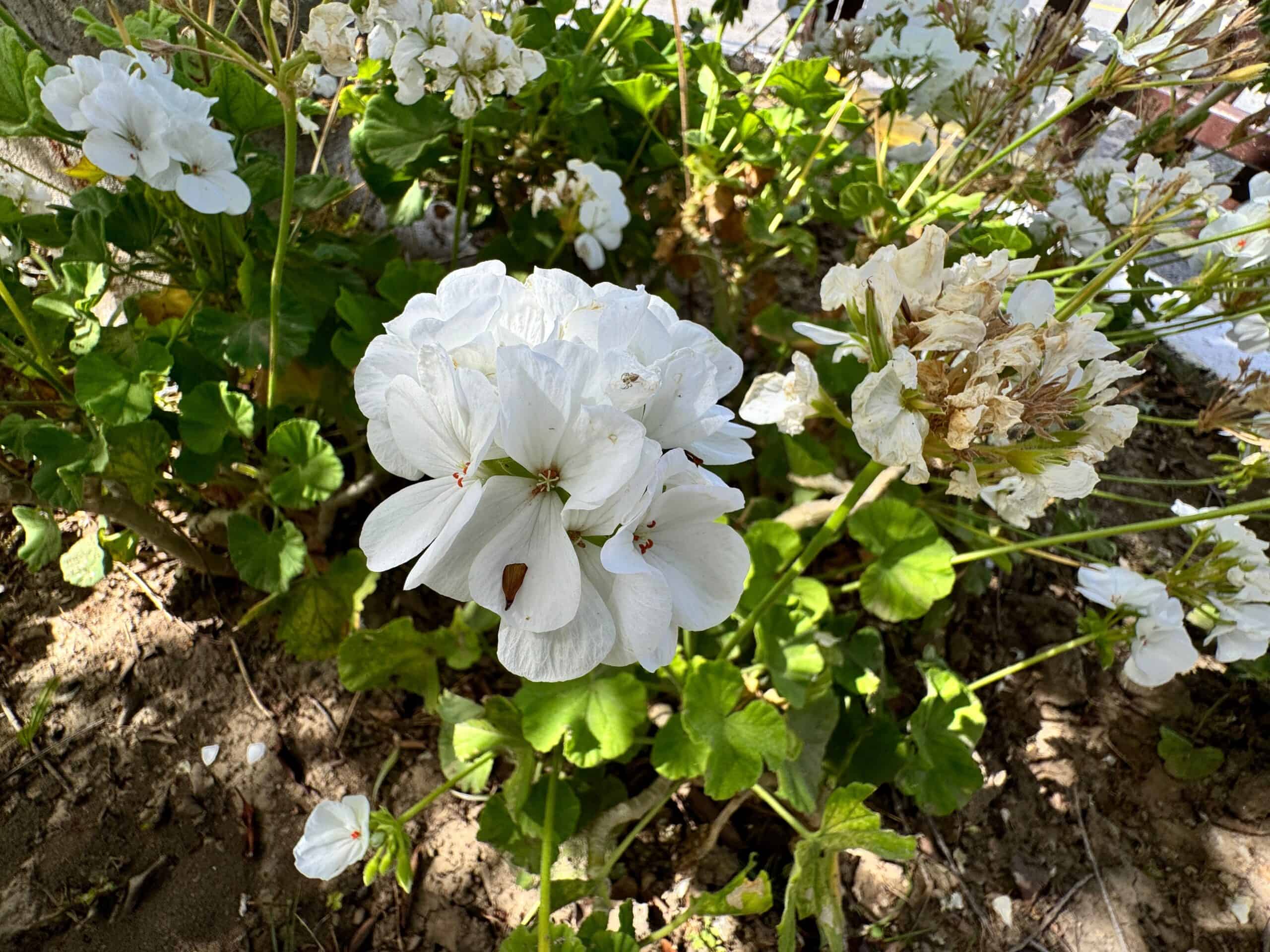
Geraniums are one of the most versatile and popular flowering plants, known for their vibrant, long-lasting blooms and easy care. These plants produce clusters of flowers in a wide range of colors, including red, pink, white, purple, and orange, making them a favorite for adding bright, cheerful color to gardens, containers, and hanging baskets. Geraniums are particularly valued for their ability to bloom continuously throughout the year in warm climates or when grown indoors. They thrive in full sun but can also tolerate partial shade, making them adaptable to various garden settings. Geraniums are relatively low-maintenance, requiring regular watering and occasional feeding to promote continuous flowering. In addition to their striking flowers, many geraniums also have aromatic foliage, which can add an extra dimension of sensory pleasure to the garden. Their resilience, coupled with their vibrant colors and long blooming season, make geraniums a go-to choice for gardeners looking to add long-lasting beauty and color to their spaces. Whether used as bedding plants, in containers, or as houseplants, geraniums are a reliable and attractive addition to any garden or home.
Pentas
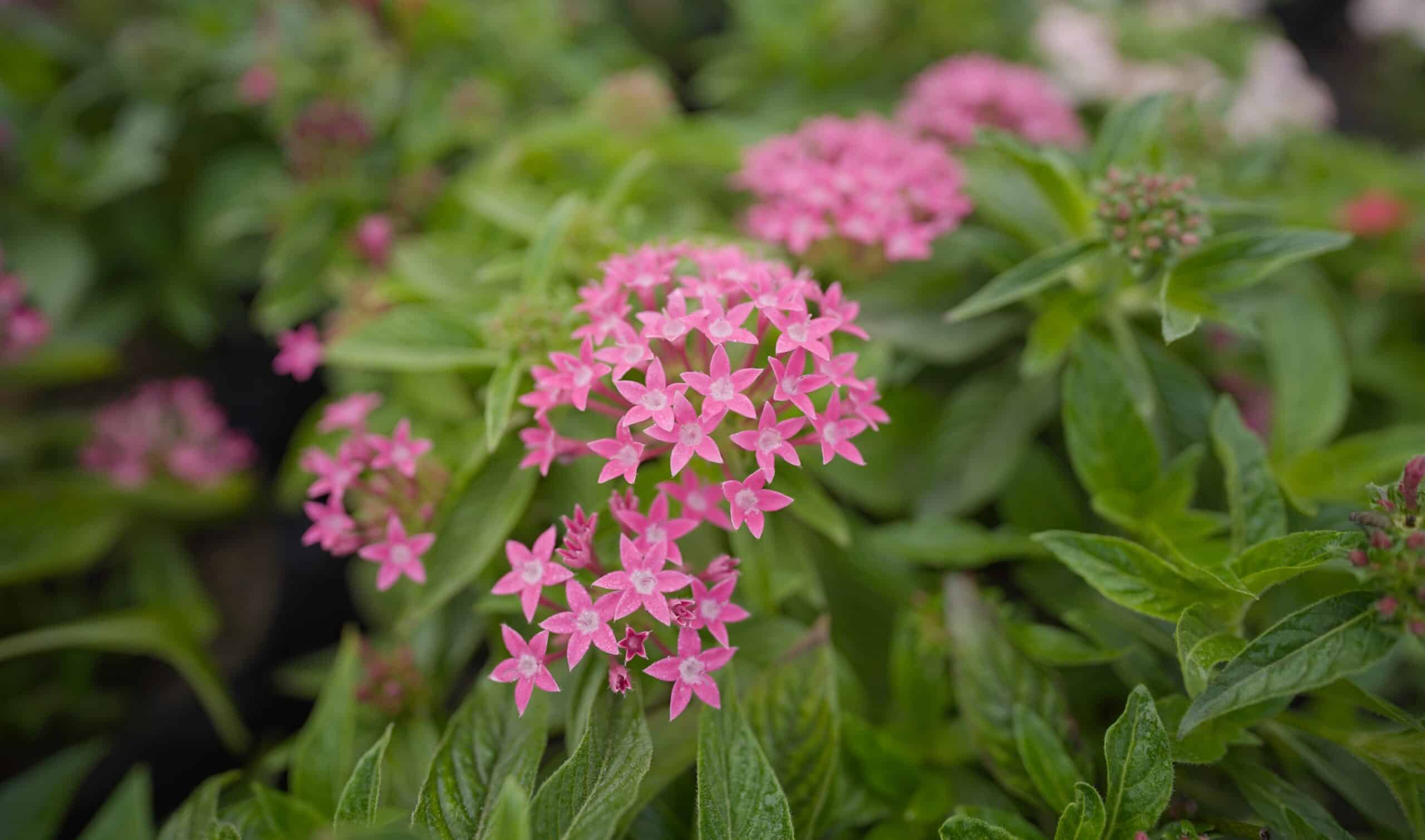
Pentas, also known as Egyptian Star Cluster, is a striking flowering plant that is highly valued for its ability to bloom year-round in warm climates. The plant produces clusters of small, star-shaped flowers in a variety of colors, including red, pink, white, and purple, creating a vibrant display of color in gardens, borders, and containers. Pentas are particularly attractive to pollinators, especially butterflies and hummingbirds, making them a lively addition to any garden. The plant thrives in full sun and well-drained soil, and it is relatively low-maintenance, requiring regular watering and occasional feeding to promote continuous flowering. Pentas are also drought-tolerant once established, making them a practical choice for gardeners in dry or hot climates. Their ability to bloom continuously, coupled with their vibrant colors and pollinator-friendly nature, makes Pentas a standout choice for gardeners looking to create a dynamic and colorful landscape. Whether planted in mass groupings or as a single specimen, Pentas add a touch of tropical beauty to any garden setting.
Jasmine
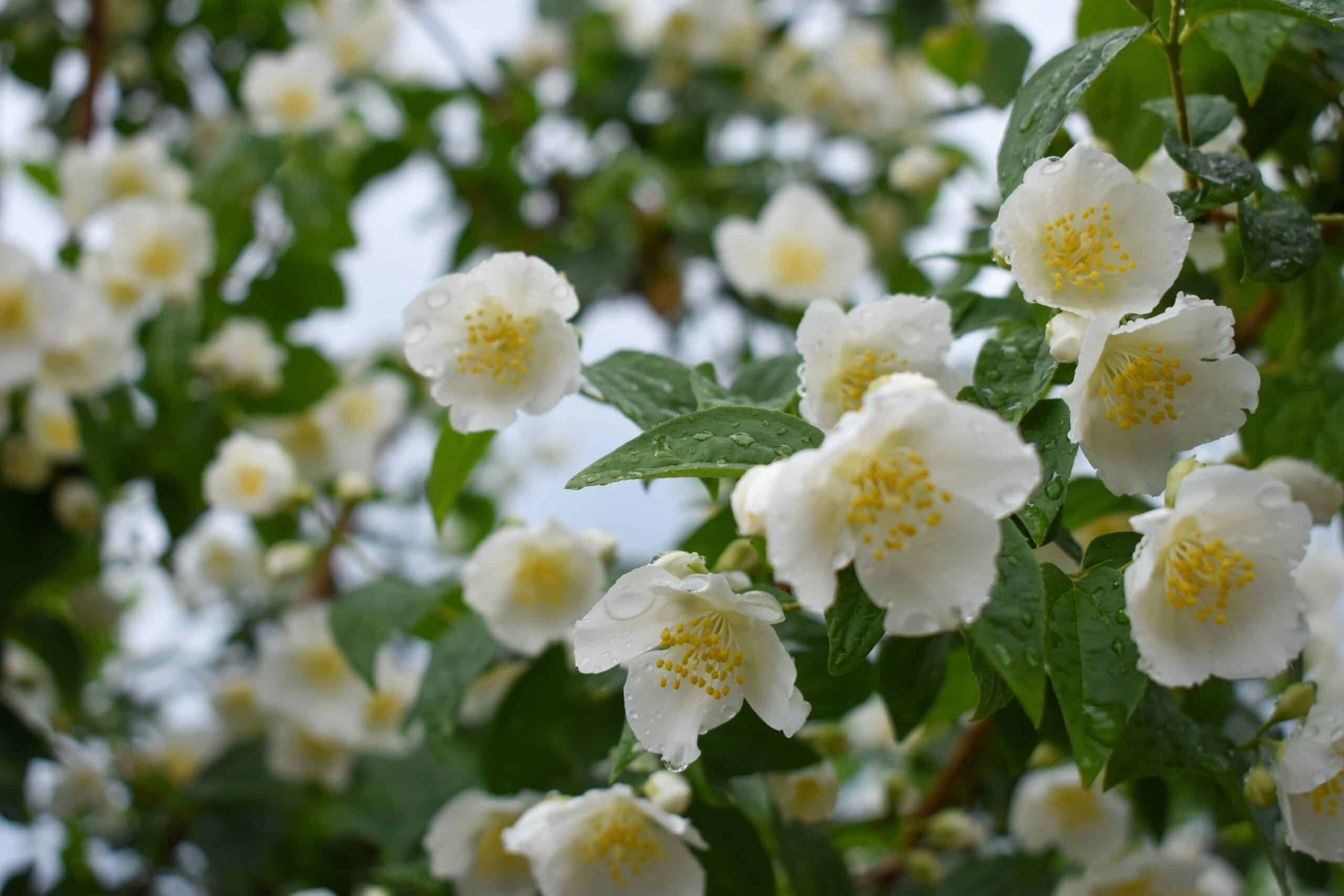
Jasmine is one of the most beloved flowering plants, renowned for its sweet fragrance and delicate white or yellow flowers that bloom year-round in warm climates. This versatile plant can be grown as a vine, shrub, or ground cover, depending on the variety and how it’s pruned. Jasmine is particularly prized for its intoxicating scent, which is often used in perfumes, teas, and aromatherapy. The plant prefers full sun and well-drained soil, and it is relatively drought-tolerant once established. Jasmine’s elegant flowers and enchanting fragrance make it a favorite for adding a touch of romance and fragrance to gardens, patios, and indoor spaces. In addition to its aesthetic appeal, Jasmine is also known for its ability to attract pollinators, particularly bees, which are drawn to its nectar-rich flowers. Whether trained to climb a trellis, used as a ground cover, or grown in a container, Jasmine’s continuous blooming and delightful scent ensure that it remains a cherished addition to any garden or home.
Kalanchoe
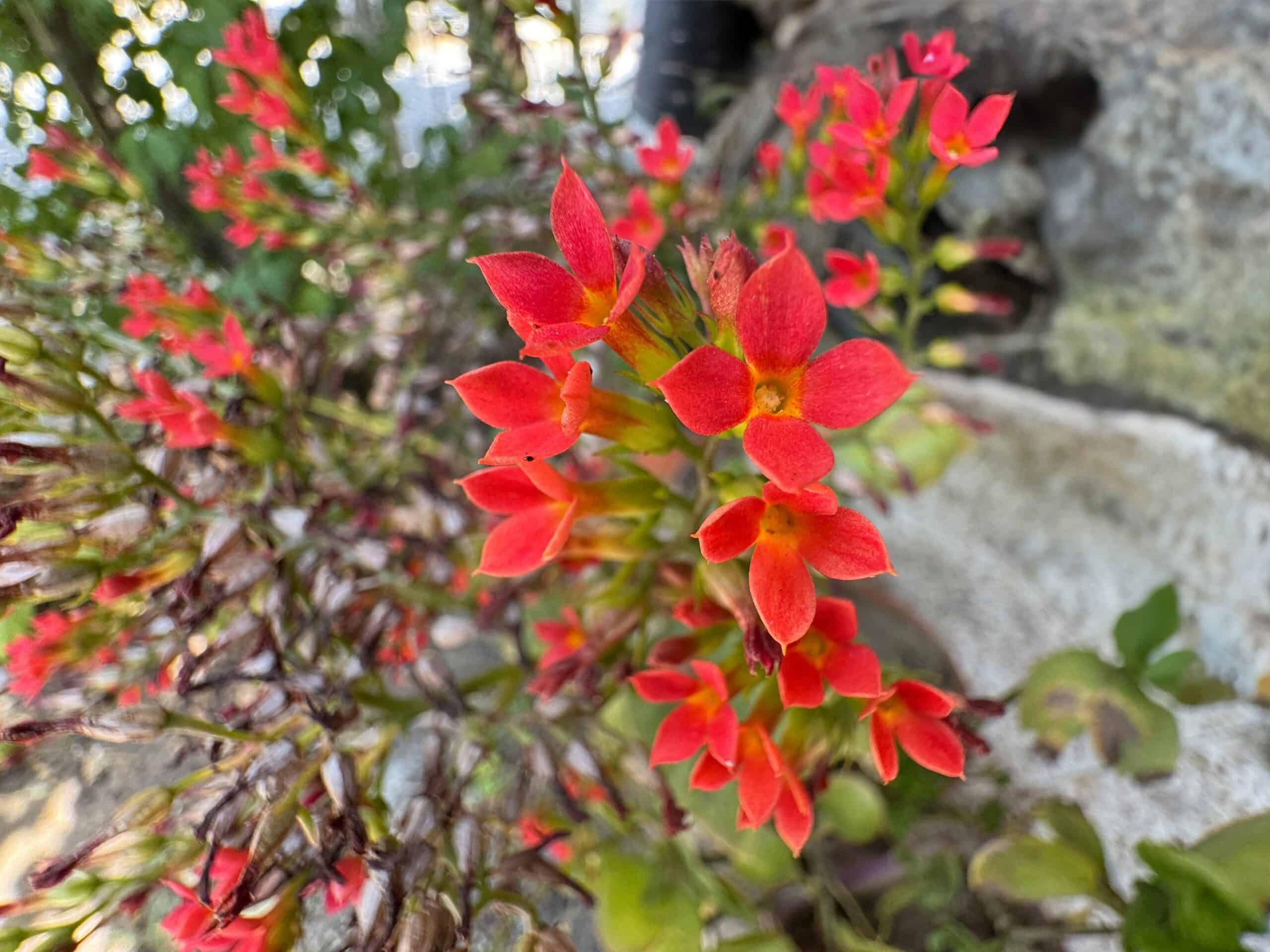
Kalanchoe is a popular succulent that is known for its thick, fleshy leaves and clusters of small, brightly colored flowers that bloom year-round, especially when grown indoors. These flowers come in various shades, including red, pink, yellow, and orange, adding a splash of vibrant color to indoor and outdoor settings. Kalanchoe is highly valued for its low maintenance requirements, as it thrives in bright, indirect light and requires only occasional watering. The plant’s ability to store water in its leaves makes it drought-tolerant, making it an excellent choice for gardeners looking for a hardy, easy-to-care-for plant. Kalanchoe’s continuous blooming, combined with its striking flowers and minimal care needs, makes it a popular choice for both novice and experienced gardeners. Whether grown as a houseplant or in a garden, Kalanchoe adds a touch of beauty and resilience to any space.
Golden Trumpet (Allamanda)
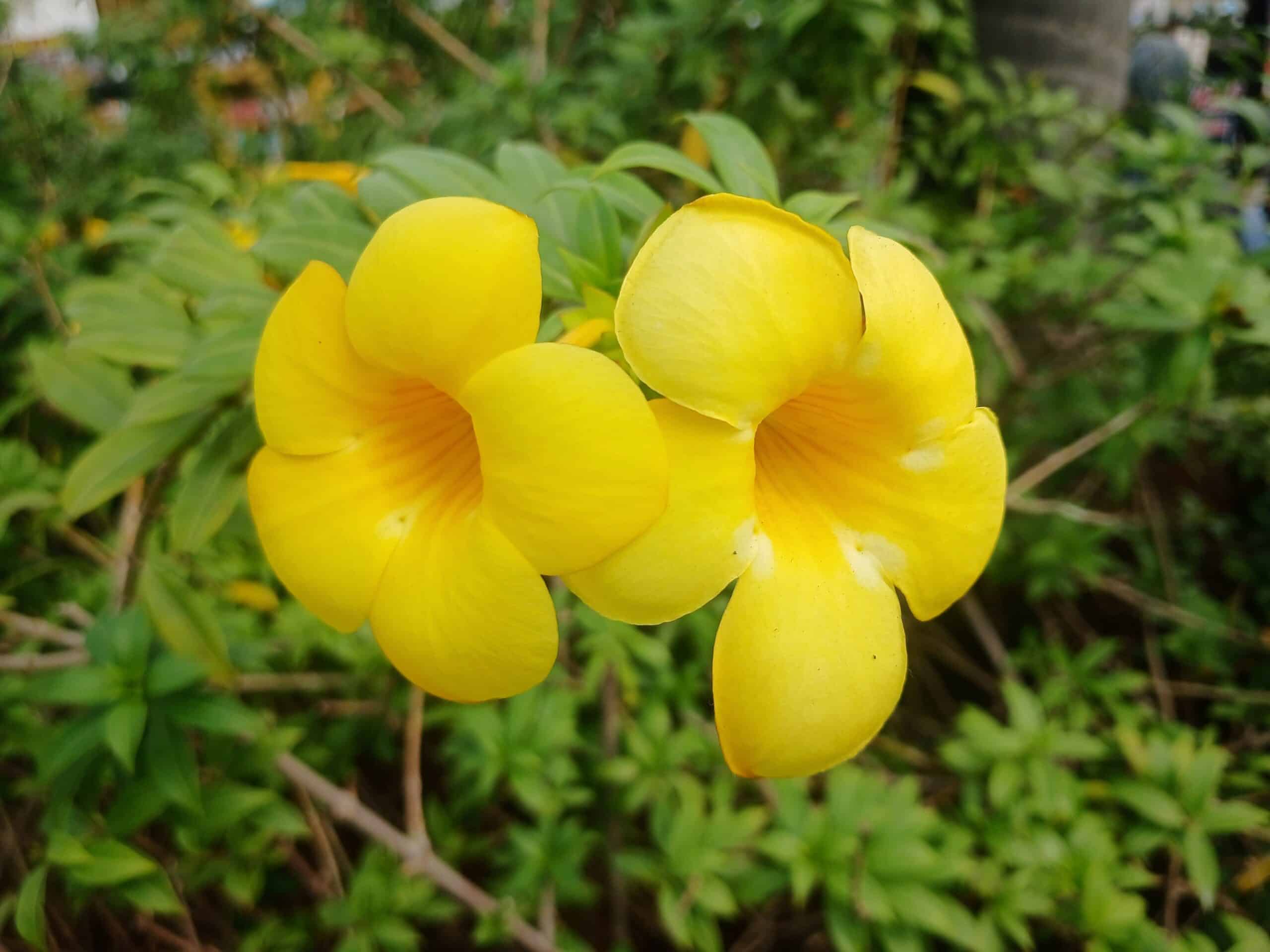
The Golden Trumpet, also known as Allamanda, is a tropical plant that produces large, trumpet-shaped yellow flowers year-round in warm climates. This plant is often used in landscaping for its vibrant, showy blooms and its ability to cover trellises, fences, and walls with its lush foliage. Golden Trumpets prefer full sun and well-drained soil, and they can be grown as vines or shrubs, depending on how they are pruned. The plant is relatively low-maintenance, requiring regular watering and occasional feeding to promote continuous flowering. Golden Trumpet’s striking appearance and year-round blooms make it a standout choice for adding a cheerful, tropical vibe to gardens and landscapes. In addition to its aesthetic appeal, the plant’s flowers are also known for their slight fragrance, which adds to its overall charm. Whether used to create a vibrant backdrop in a garden or as a focal point in a landscape, Golden Trumpet’s continuous blooming and bright, cheerful flowers make it a favorite among gardeners.
Snapdragons
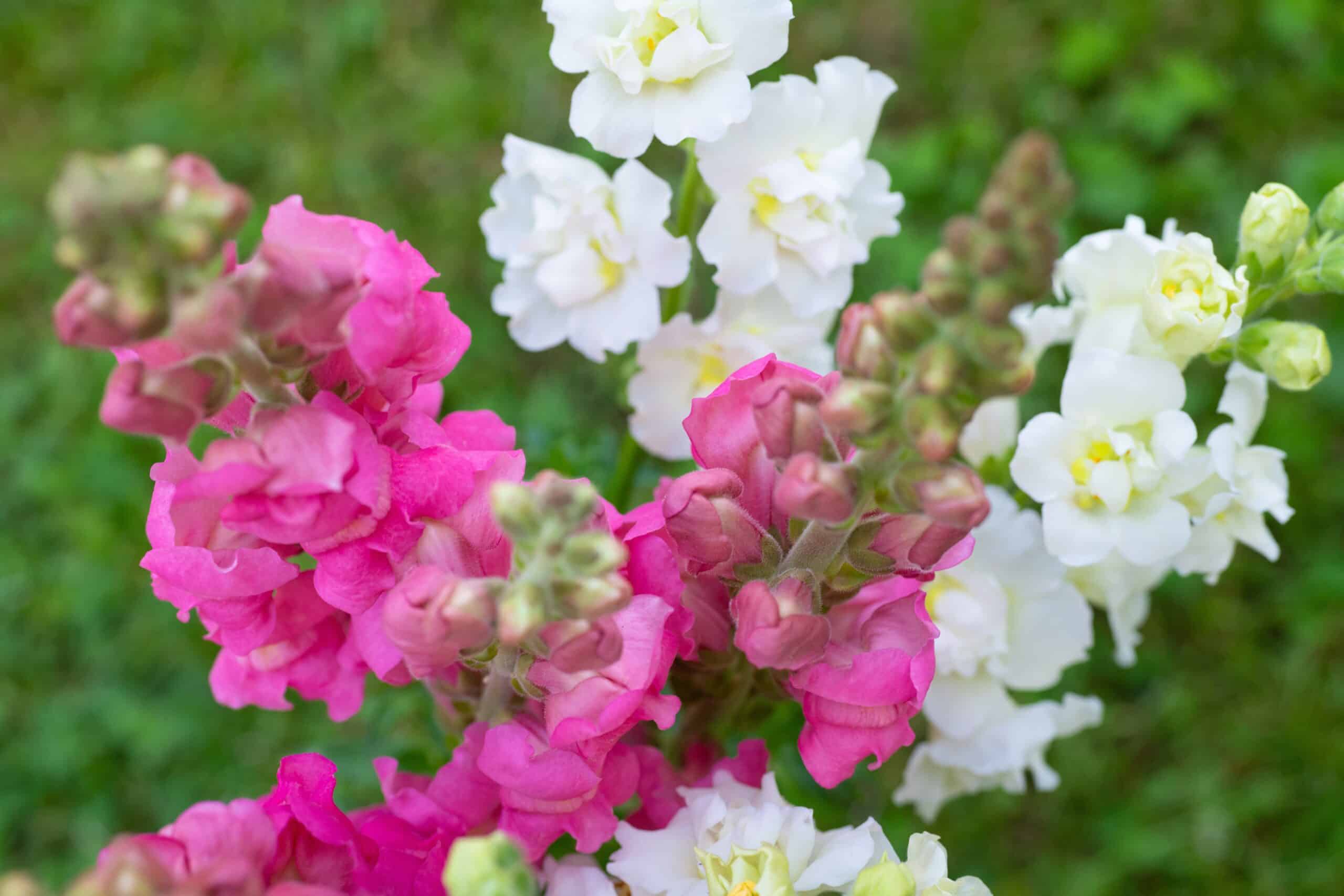
Snapdragons are unique, eye-catching plants known for their tall spikes of colorful, dragon-shaped flowers that can bloom year-round in the right conditions. These flowers, which come in a wide range of colors including red, pink, yellow, white, and purple, are named for their resemblance to a dragon’s mouth, which “snaps” open and closed when squeezed. Snapdragons are particularly valued for their long blooming season, which can extend from early spring to late fall. They thrive in full sun and well-drained soil, making them an excellent choice for borders, containers, and cut flower arrangements. Snapdragons are relatively easy to grow, requiring regular watering and occasional feeding to promote continuous flowering. Their distinctive shape and vibrant colors make them a favorite for adding vertical interest and drama to gardens and landscapes. Snapdragons also attract pollinators, such as bees and butterflies, which are drawn to their nectar-rich flowers. Whether used to create a striking display in a garden or as a long-lasting cut flower, Snapdragons’ continuous blooming and unique appearance make them a standout choice for any gardener.
Purslane
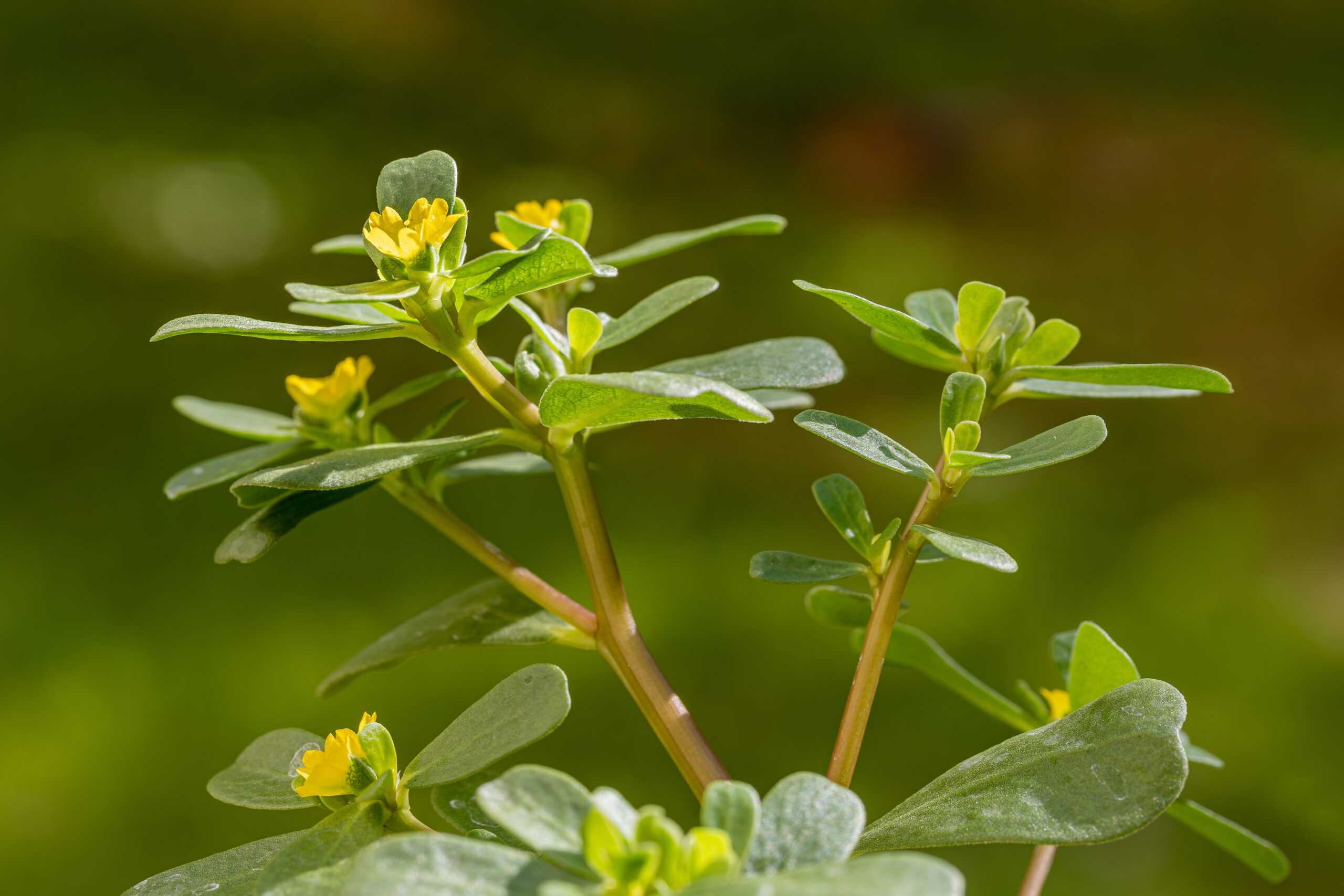
Purslane is a low-growing succulent that is known for its small, vibrant flowers that bloom year-round in warm climates. The flowers, which come in shades of yellow, pink, red, and white, open during the day, adding a bright splash of color to any garden or container. Purslane is highly valued for its ability to thrive in poor soil conditions and its drought-tolerant nature, making it an excellent choice for xeriscaping or low-maintenance gardens. The plant’s fleshy leaves help it retain moisture, allowing it to survive in hot, dry environments with minimal care. Purslane is also edible and is often used in salads and other dishes for its slightly tangy flavor and high nutritional content. In addition to its practical uses, Purslane’s continuous blooming and ability to thrive in tough conditions make it a popular choice for gardeners looking to add a resilient, colorful plant to their spaces. Whether used as ground cover, in containers, or in hanging baskets, Purslane adds a touch of beauty and utility to any garden.
Verbena
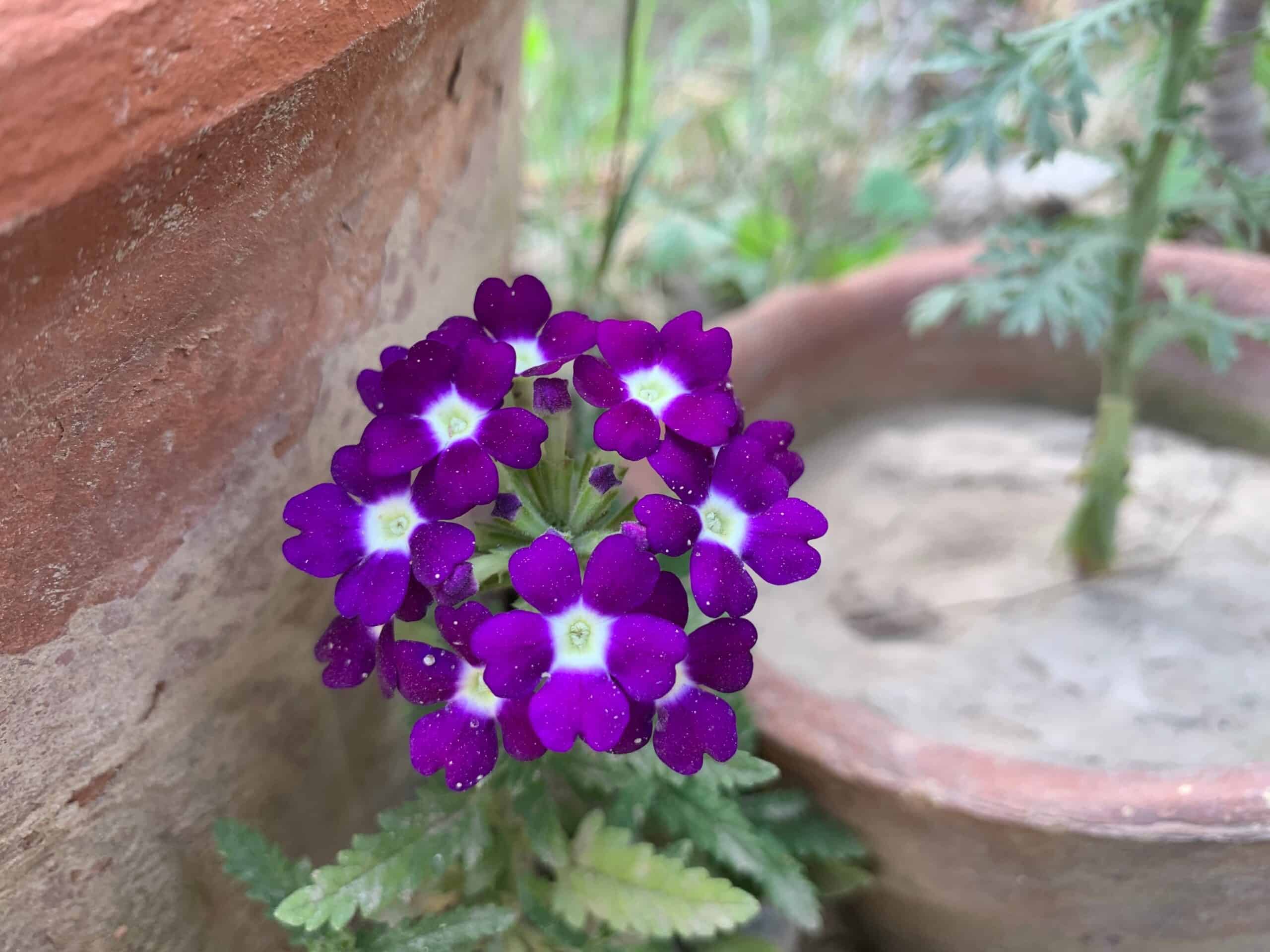
Verbena is a versatile flowering plant that is known for its ability to bloom almost year-round, offering clusters of small, colorful flowers in shades of purple, pink, red, and white. This plant is often used in hanging baskets, borders, and as ground cover, adding a burst of color to gardens and landscapes. Verbena thrives in full sun and well-drained soil, and its long blooming season makes it a favorite for gardeners looking to maintain color in their gardens throughout the year. The plant is relatively low-maintenance, requiring regular watering and occasional feeding to promote continuous flowering. Verbena is also highly attractive to pollinators, particularly butterflies, which are drawn to its nectar-rich flowers. In addition to its aesthetic appeal, Verbena is known for its ability to withstand heat and drought, making it an excellent choice for gardens in hot, sunny climates. Whether used to create a colorful border, as a ground cover, or in containers, Verbena’s continuous blooming and vibrant flowers make it a standout choice for adding long-lasting beauty to any garden.
Craspedia (Billy Button)
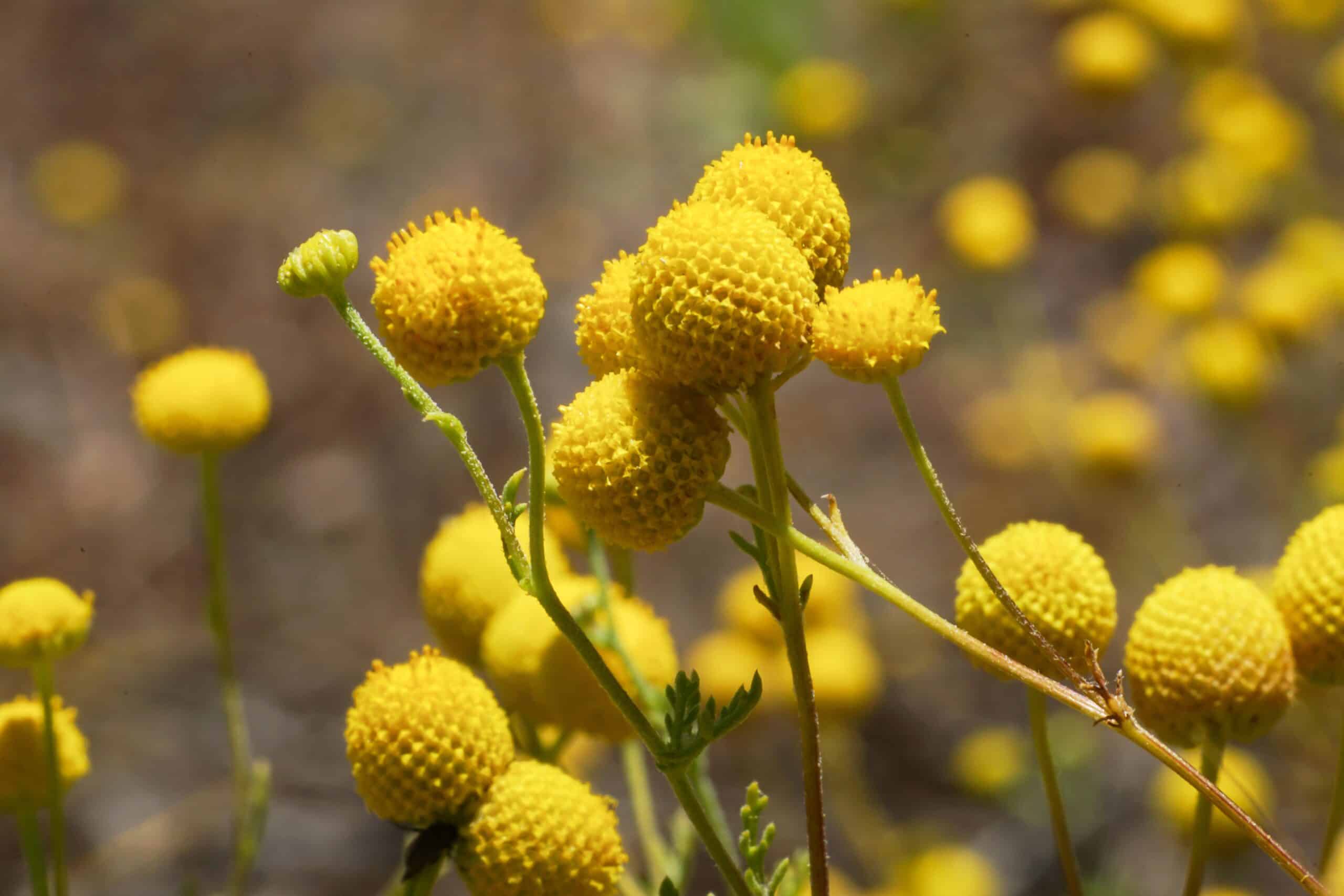
Craspedia, commonly known as Billy Button or Drumstick, is a unique flowering plant that is known for its globe-shaped, bright yellow flowers that bloom year-round in warm climates. These flowers, which sit atop tall, slender stems, are often used in fresh and dried flower arrangements for their striking appearance and long-lasting nature. Craspedia is highly valued for its drought-tolerant nature and its ability to thrive in poor soil conditions, making it an excellent choice for xeriscaping or low-maintenance gardens. The plant prefers full sun and well-drained soil, and its continuous blooming ensures that it remains a vibrant part of the garden throughout the year. In addition to its aesthetic appeal, Craspedia is also known for its ability to attract pollinators, particularly bees, which are drawn to its nectar-rich flowers. Whether used to create a whimsical display in a garden or as a focal point in a floral arrangement, Craspedia’s unique shape and bright, cheerful flowers make it a standout choice for gardeners and florists alike.
This article originally appeared on Rarest.org.
More from Rarest.org
In the fascinating world of insects, some species stand out not just for their unique appearances and behaviors but also for their extraordinary prices. Collectors and enthusiasts are willing to pay significant amounts for these rare and exotic creatures. Read more.
Exploring lost cities offers a fascinating glimpse into ancient civilizations that once thrived and then vanished, often hidden for centuries until rediscovered by modern explorers. Read more.
Many bird species faced extinction in recent decades. Through conservation efforts, some have made remarkable recoveries. Read more.

